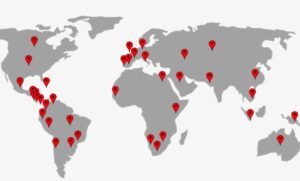Magnetic nano-pulling: a new methodology for exploring the role of force as a messanger of axonal growth
Alessandro Falconieri1,, Sara De Vincentiis1, Valentina Cappello2, Domenica Convertino3, Samuele Ghignoli1, Sofia Figoli1, Frederic Català-Castro5, Laura Marchetti3,4, Ugo Borello1, Michael Krieg5, Vittoria Raffa1*
1. Department of Biology, Università di Pisa, Pisa, 56127, Italy
2. Center for Materials Interfaces, Istituto Italiano di Tecnologia, Pontedera, 56025, Italy
3. Center for Nanotechnology Innovation @NEST, Istituto Italiano di Tecnologia, Pisa, 56127, Italy.
4. Department of Pharmacy, Università di Pisa, Pisa, 56126, Italy
5. ICFO – The Institute of Photonic Sciences, Barcelona, 08860, Spain
[email protected]
Abstract
The axon is the projection that emerges from the neural cell body and establishes synaptic contacts with its partner. In developing neurons, the growth cone is a fine sensor that integrates mechanical and chemical cues and transduces these signals through the generation of a traction force that pushes the tip and pulls the axon shaft forward. The axon shaft, in turn, senses this pulling force and transduces this signal in an orchestrated response, coordinating cytoskeleton remodeling and intercalated mass addition to sustain and support the advancing of the tip. Extensive research suggests that the direct application of active force is per se a powerful inducer of axon growth, potentially bypassing the contribution of the growth cone. This mechanism is generally referred to as “stretch growth”. Unfortunately, the molecular mechanisms underlying the stretch growth process and how axonal growth is coupled in time and space to intercalated mass addition are largely unknown. Recently, we have validated a nanotechnology-based biophysical tool to mechanically manipulate hippocampal neurons at the axon level. The technique is based on the magnetic labeling of the axons via magnetic nanoparticles (MNP) and the magnetic nano-pulling by the application of a magnetic field gradient. We focused our investigation at the axon level and we used Axon-Seq to segregate the local response from the somatic one. Our data support the idea that the force induces a local response consisting in axonal cytoskeleton remodeling, axonal transport modulation and local translation activation, which, in turn, transduces a cellular response consisting in axon outgrowth and synapse maturation. This knowledge could also have practical implications in terms of potential novel therapies for re-wiring the nervous system.

- Society

Membership
Support our mission by becoming a member

Public Health Policy Center
Explore the society's public health initiatives

Meet the community
See what our members have been working on
- Journal
- Author Center
- Membership